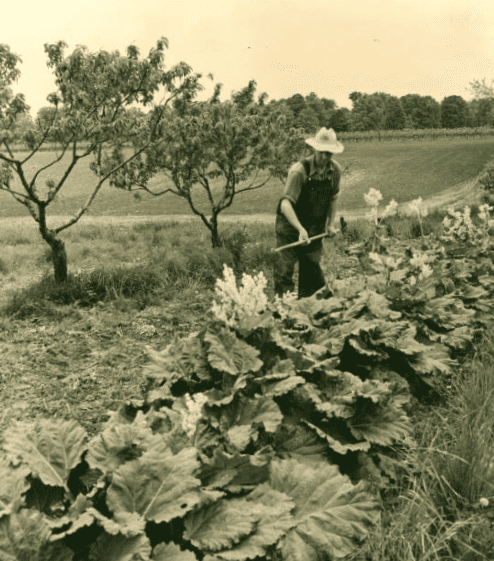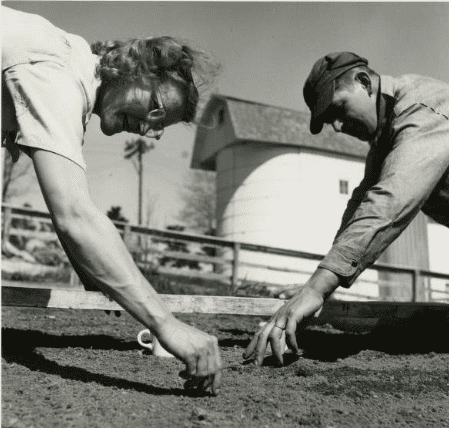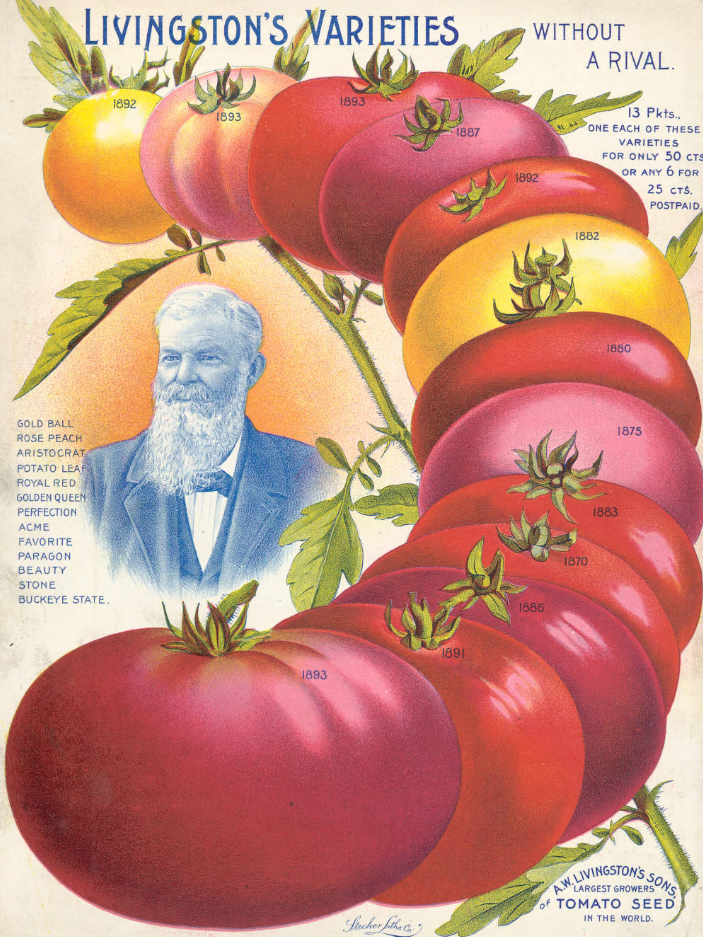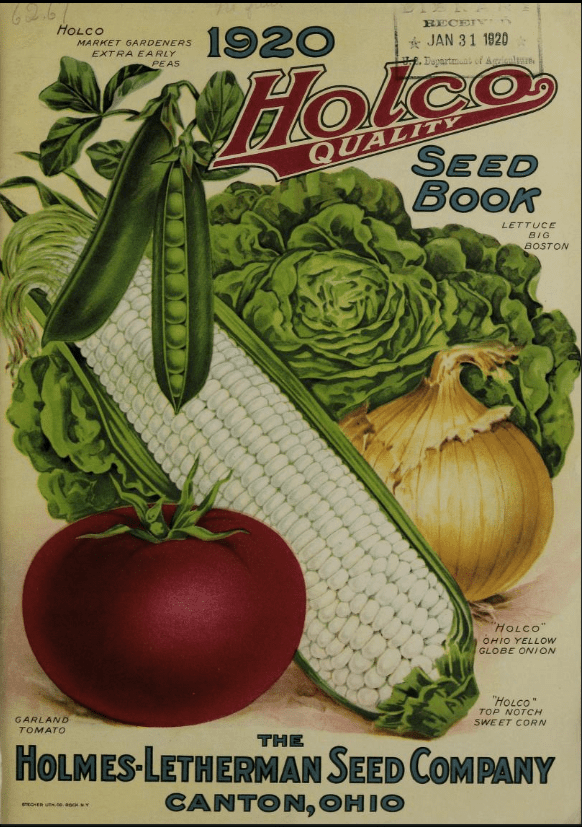Spring means it’s garden season. As at-home planters ready their gardens, they have to choose from the many, many, MANY varieties of fruits, vegetables and herbs to plant. As you flip through seed catalogs or peruse the vast amount of seed stores online, you may notice the words “hybrid” and “heirloom” thrown around. One of these, though, gives your garden some historic flair.

This photo from 1930s-1940s features a farmer from Trumbull County, Ohio tending to his plants. Via Ohio Memory.
What’s the difference between a hybrid and an heirloom? This is about to get scientific.
According to Seed Savers, a non-profit dedicated to conserving and promoting heirloom seeds and plants, a hybrid plant is created through a “controlled method of pollination in which the pollen of two different species or varieties is crossed by human intervention.” Generally, the first generation of a hybrid plant is the most bountiful, and new seeds must be purchased every year.

This photo shows a husband and wife planting seeds in their garden in the 1950s. From the Joe Munroe collection on Ohio Memory.
In contrast, an heirloom “is a plant variety that has a history of being passed down within a family or community, similar to the generational sharing of heirloom jewelry or furniture.” Even if a plant doesn’t have an extensive lineage mapped out, if the variety is more than 50 years old it is often also labeled as an heirloom. Seeds are harvested from heirloom plants and used the following growing season. Some heirloom varieties have had their seeds passed down through several generations of a family.
If you’re looking to give a nod to the Buckeye State in your garden, look no further than Ohioan A. W. Livingston. Livingston started a seed business near Reynoldsburg, Ohio in 1852 which became quite popular. As his business expanded, Livingston wanted to improve the tomato. Previous versions of the tomato were much smaller and tasted sour. Livingston spent decades breeding different tomato varieties – more than 30 in all. You can still purchase Livingston tomatoes, including the Golden Queen Tomato and the Paragon. Each year the city of Reynoldsburg holds their annual Tomato Festival which celebrates this heritage.

This seed catalog from A.W. Livingston Seeds features both the Paragon and the Golden Queen. From Ohio Memory.
Another homegrown veggie is the Holmes Royal Red Radish. While the common radish has origins in Asia or the Mediterranean, this variety was developed here in Ohio. This radish was introduced by the Holmes Seed Company of Canton in 1899. The Holmes Seed Company is still in operation and celebrating their 125th anniversary this year! Want to see what other vegetables the Holmes Seed Company has sold in the past? Take a look through some of their old seed catalogs here.

A 1920 seed catalog from the Holmes-Letherman Seed Company. From the Henry G. Gilbert Nursery and Seed Trade Catalog Collection.
Whether this is your first try at growing vegetables or you’re a master gardener, adding heirloom varieties is sure to make your garden historic!